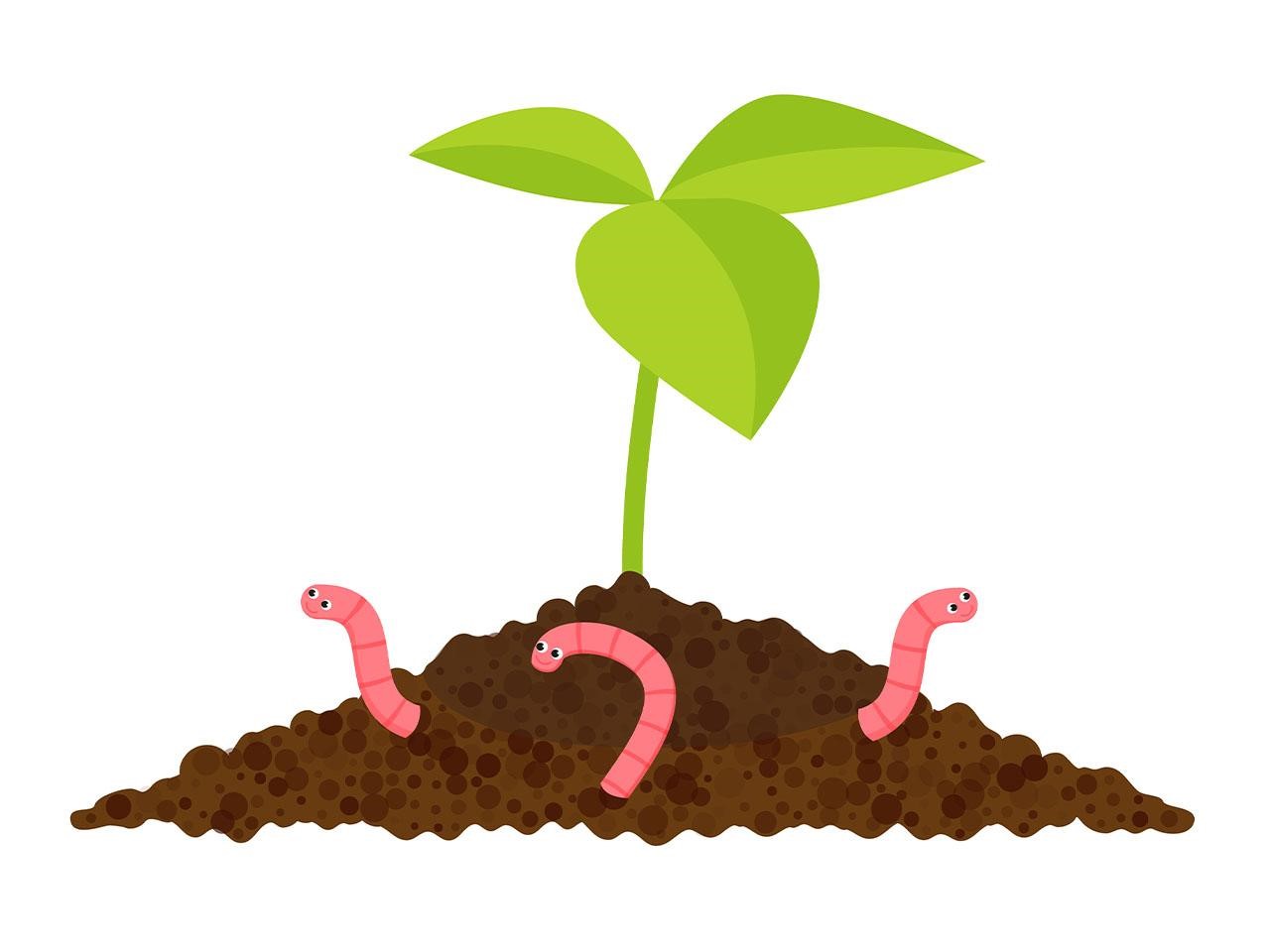Once upon a time, there was a farmer who was struggling to maintain the fertility of his soil. He tried everything he could think of – fertilizers, crop rotation, composting – but nothing seemed to work. One day, he noticed that his neighbor’s fields were thriving. Curious, he asked his neighbor what his secret was. The neighbor replied with a smile: “Earthworms!
Earthworms play a major role in promoting healthy soils and sustaining modern agricultural systems. Helping to decompose organic matter, they contribute important nutrients and minerals that plants need to grow. We’ll explore their unique ecological functions, discuss the ways farmers can use them to boost yields and provide tips for integrating them into existing farming practices. If you’ve been looking for an effective, affordable way to maximize your agricultural success without damaging the environment, keep reading!
Earthworms and Their Role in Sustainable Agriculture
Earthworms are incredible creatures that play an important role in sustainable agriculture. Their bodies are full of cells responsible for enriching soil with vital nutrients, making it easier for plants to grow and thrive. By aerating the soil and creating tunnels, they contribute to better water drainage and help break down organic matter into organic material that can be absorbed back into the earth.

Earthworms tirelessly work night and day and in doing so allow life to continue in what would otherwise be an unproductive ground layer. This is a great way to ensure the continuing cycle of plant growth around us while also providing our food sources with nutritious elements. The use of earthworms should not be understated as their valuable contribution to sustainable agriculture cannot be denied.
How Earthworms Help Improve Soil Quality

Earthworms are not only fascinating creatures but are also incredibly important for soil quality. By consuming and digesting organic matter on the surface of the ground and in the soil, earthworms create tunnels that allow air and moisture to reach deeper into the dirt. This helps balance carbon dioxide levels in the soil, as well as break down dead or decaying material, both of which improve soil fertility overall.
In addition, by reducing compaction of the soil surface through their burrowing, they help provide better drainage and aeration in otherwise hard-packed dirt. This allows other organisms (like microscopic friendlies!) to live, grow, and multiply that would otherwise have a hard time doing so in an inhospitable environment. All these benefits taken together make it clear just how essential earthworms are – not only to our gardening success – but also to sustainably growing healthy crops!
The Benefits of Introducing Earthworms to Your Garden
Introducing earthworms to your garden can be a tremendous asset! Earthworms aerate the soil, allowing for better water drainage and root system development. They also help convert organic matter into humus, which is an important source of nutrition for plants. Furthermore, earthworms are great at breaking down large soil particles so that minerals and nutrients from the organic matter become available to the surrounding soil at a faster rate.

Introducing earthworms to your garden can be a tremendous asset! Earthworms aerate the soil, allowing for better water drainage and root system development. They also help convert organic matter into humus, which is an important source of nutrition for plants. Furthermore, earthworms are great at breaking down large soil particles so that minerals and nutrients from the organic matter become available to the surrounding soil at a faster rate.
Simple Ways to Attract Earthworms to Your Garden
Attracting earthworms to your garden can have many positive benefits. According to experts, a good population of earthworms can improve soil structure, reduce compaction, and increase nutrient availability, providing an excellent foundation for healthy plants. Luckily, there are several tiny modifications you can make that will create an inviting atmosphere for earthworms. First, adopting no-till practices can reduce soil compaction and further encourage worm activity.
Additionally, adding manure or compost to the soil is a great way to attract worms; they’ll come drawn in by the moistness within the compost and the attractive food sources it contains. Finally, making sure to keep your garden’s soil covered with either a layer of mulch or leaf litter helps retain moisture in the soil and protects earthworms from extreme temperatures and drying wind. In summary, implementing these small changes can help you create a little paradise for the charming earthworm!
Common Problems with Earthworm Populations and How to Address Them
Earthworms are critical to the health of ecosystems, but their populations are sometimes threatened by human activity. Common problems caused by humans include the destruction of soil habitats, pollution, and heavy use of pesticides and fertilizers. To protect earthworm populations, it is important to practice sustainable gardening techniques such as using organic fertilizer, leaving the soil undisturbed, and avoiding over-watering gardens.
Additionally, providing more habitat for earthworms by using mulch or creating compost heaps can help improve soil quality and make conditions more hospitable for the creatures. Finally, encouraging local governments to implement water filtration systems or associated legislation can greatly reduce water pollution in affected areas and create a safe environment for earthworms to thrive in.
Tips for Incorporating Earthworms into Your Sustainable Agricultural Practices
Farming with earthworms is an effective and sustainable way to improve soil health, increase crop yields, and reduce input costs. To start incorporating earthworms into your agricultural practices, be sure to invest in quality breeders and support local breeders when possible. Once your worms arrive, supplement their food with a mix of composting fruits and vegetables as well as finished compost from your farm or nearby sources.
Give them plenty of refuge from the sun, maintaining temperatures that hover around 11-18°C (55-65°F) by providing a substrate like straw or leaves on top of the soil. Regularly monitor soil moisture levels while maintaining high organic matter content which helps ensure optimal air flow within the soil. Finally, it is important to keep earthworm populations happy by avoiding harsh chemical treatments in your garden. All these simple tips can lead you toward successfully introducing earthworms into your sustainable farming practices!

Last Word
In conclusion, earthworms can be a highly beneficial addition to your sustainable agricultural practices. Adding them to your garden can improve soil quality, help retain moisture and nutrients, and even reduce the need for chemical fertilizers. Taking care of your earthworm population does require some effort on your part: making sure that their environment stays moist and healthy for optimal survival, introducing new worms if necessary, and avoiding pesticide use when possible.
But by implementing these tips and taking advantage of the benefits offered by earthworms, you will likely find that they are an asset worth the extra work. Whether you’re just beginning to learn about sustainable agriculture or have been trying different methods for years, introducing composting worms into your system is one of the best ways to ensure a healthier and more abundant harvest.
FAQ
They aerate and enrich soil, promote drainage and absorption of water and minerals, reduce erosion and increase oxygen levels. They feed on decaying organic matter and regenerate soil with their waste. Their burrowing creates air-filled passages for air and water throughout the soil profile.
They reduce compaction and increase soil organic matter, resulting in higher crop yields. Earthworms improve soil structure and health, regulate nutrients and aerate plant roots. They consume decomposing material which acts as a natural fertilizer. Their biomass is rich in protein and can be used for animal feed manufacturing.
Maintaining the earthworm population and being selective when releasing them onto land is important. Controlling environmental factors such as temperature is also crucial. These obstacles can make it difficult for farmers to effectively utilize earthworms.

